Preface: before we begin this piece of analysis, please allow us to state how saddened we were to read about the death of midfielder Siphamandla Mtolo, who sadly passed away recently.
Once a little-known football club in South Africa, Richards Bay F.C. has recently made waves in the world of South African football with their impressive performances and captivating rise. In 2017, Richards Bay was founded as a newly formed club, determined to make a name for themselves in the highly competitive South African football scene. The team quickly made a splash by winning the KwaZulu-Natal ABC Motsepe League in their very first season, earning themselves a promotion to the National First Division.
Richards Bay finally gained promotion to the South African Premier Division (PSL) by winning the National First Division last season. They won promotion with the best defence in the league, only conceding 22 goals all season. This is something that they have brought into the top flight, having only conceded 16 goals so far this campaign.
However, there are issues at the other end of the pitch as Richards Bay have scored a meagre 17 goals so far this season which is rather interesting for a team that is currently sitting in sixth place in the league. This is actually a common theme in the PSL this season as fourth-place Kaizer Chiefs have a goal difference of zero while fifth-place Cape Town City have scored 26 and conceded 25.
This tactical analysis in the form of a scout report will look at how Richards Bay play under co-coaches Vasili Manousakis and Pitso Dladla as well as the tactics they use. This tactical analysis will also analyse how Richards Bay’s solid defensive record has been the key to their success and provide an analysis of their attacking output.
Preferred formations
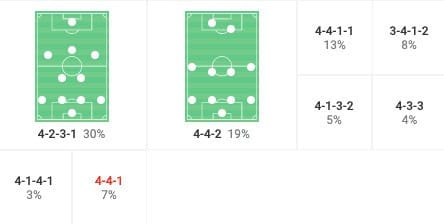
It’s no surprise that Manousakis and Dladla favour defensively solid formations, their most utilised two being the 4-2-3-1 and 4-4-2.
The 4-2-3-1 formation is characterised by two holding midfielders who protect the back four, allowing the attacking midfielders and lone striker to focus on creating chances and scoring goals. This formation provides a solid defensive foundation, as the holding midfielders can cover the gaps left by the full-backs when they push forward.
Similarly, the 4-4-2 formation also offers a strong defensive structure. With two banks of four players, the team can effectively protect their goal and limit the opposition’s attacking opportunities. Additionally, the two strikers can create a pressing trap to disrupt the opposition’s build-up play and win the ball back in dangerous areas.
Left-sided attacks
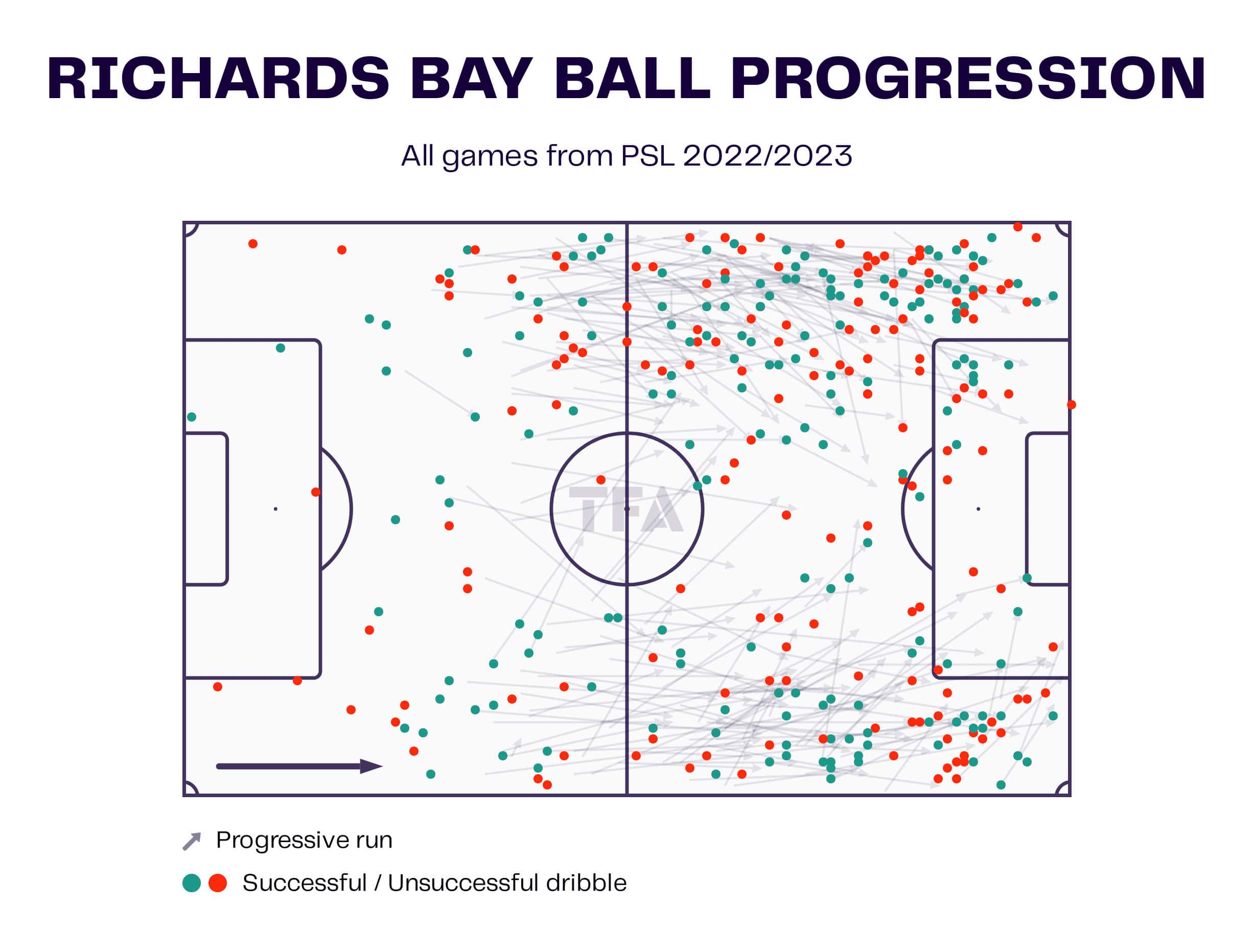
Richards Bay mainly focus their attacks down the left flank. There are many reasons that a team would opt to do this as we will explain:
Attacking down one flank in football can have several advantages; you can stretch the opposition’s defence and create more space in the middle of the pitch. This can allow your team to exploit gaps and create more opportunities to score. It can allow your team to create numerical overloads, by having more players attacking down one side, you can overwhelm the opposition defence and create more chances to score.
It’s also a great way to isolate individual defenders and force them to defend one-on-one. This can make it easier for your attacking players to beat their man and create scoring chances. By focusing your attacks down one flank, you can specifically target the weaker side of the opposition defence and exploit any weaknesses or vulnerabilities that may exist.
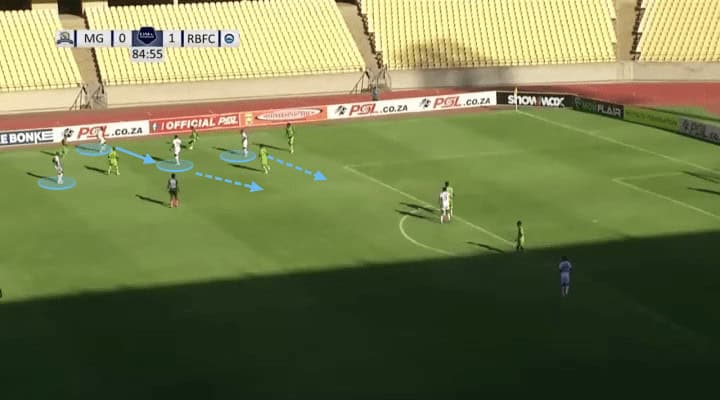
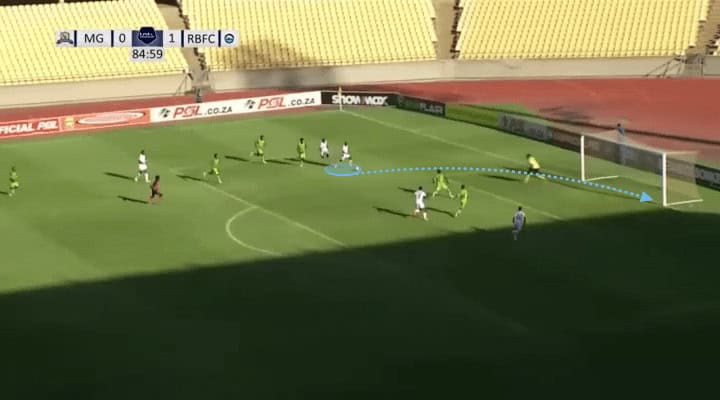
The images above are a great example of how Richards Bay utilises left-side overloads to their advantage. There are four Richards Bay players on the left side, which of course has attracted an equal number of opposition players. This leaves vast space in the central areas for the Richards Bay forwards. In this particular sequence of events, they work their way into the box from the left side and Sanele Barnes is able to score a well-placed goal.
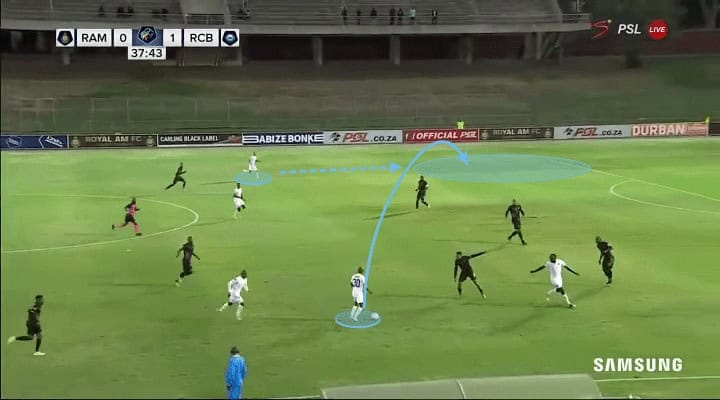
The left-sided attack is a noticeable theme throughout the majority of Richards Bay’s attacks. They build up so far down the right-hand side and then look to switch the play over to the left. The image above shows a regular occurrence during Richards Bay’s counterattacking play. They regained possession and began to attack down the right which, of course, enticed the opponent, meanwhile the left winger was free to maraud into the space left available by the opposition full-back. A quick switch and they’re in.
There is an obvious issue with this that needs to be pointed out; constantly repeating the same attacking routines and looking for the same outlet is incredibly predictable. It makes it relatively straightforward for the opposing team to stifle the attacking threat.
Given the lack of goals scored by Richards Bay, it’s safe to say this is not having the desired attacking output. With that being said, not all of their lack of goals can be put down to this one thing.
Truthfully, Richards Bay don’t create that many chances during a game. Out of the 17 goals scored so far this season, three have been penalties. It’s important to say that this is a team that mostly looks to hit teams on the counter and will often spend large periods of a game without possession.
Making the most of mistakes
When watching Richards Bay, you get the overall sense of this ‘never say die’ attitude. They are a team that will battle in every duel and chase down every lost cause, to be fair (and to the opponent’s chagrin), it works. Whilst three of the 17 goals scored have been penalties, another three have been own goals which goes to show how Richards Bay are adept at forcing errors from their opponents.
The images below are a good example of this. Having lost possession, the Richards Bay attackers hassle their opponents until the defender plays a pass that ricochets off his own man. First player to the ball? One in a Richards Bay shirt, who scores a nice chip over the keeper.
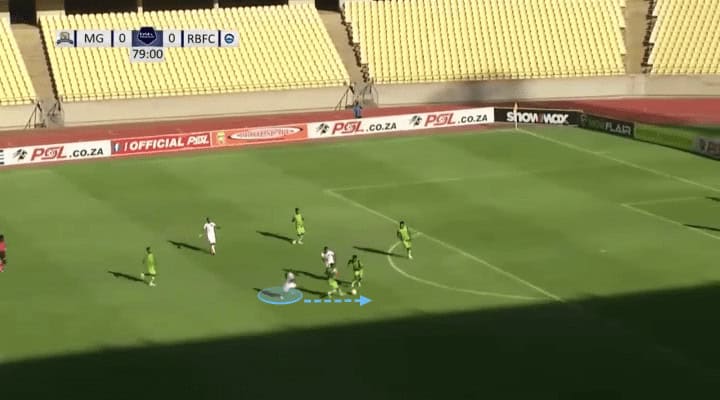
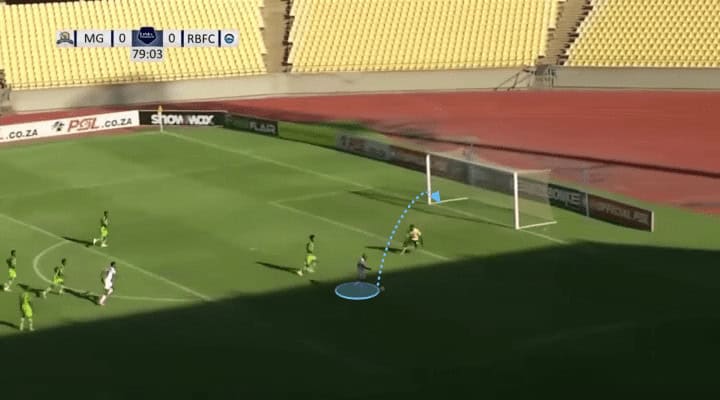
Launching it
A very noticeable element of Richards Bay’s tactics under Manousakis and Dladla are the long balls. Averaging 51.2 long passes per game, the South African outfit are certainly not averse to launching it long in a bid to create an opportunity. They actually have a decent accuracy for their long passes; 54%. The problem lies with the other 46% that fail to find their target.
As shown in the images below, the long passes are easier to intercept, meaning Richards Bay turnover possession regularly. It means they are vulnerable to counterattacks from the opposition, as players are often out of position and unable to recover quickly.
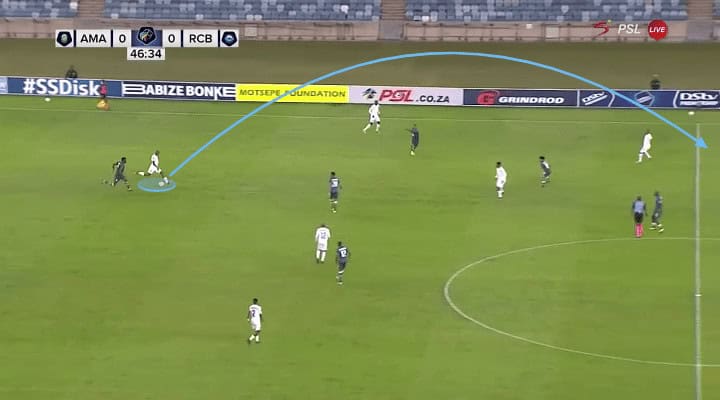
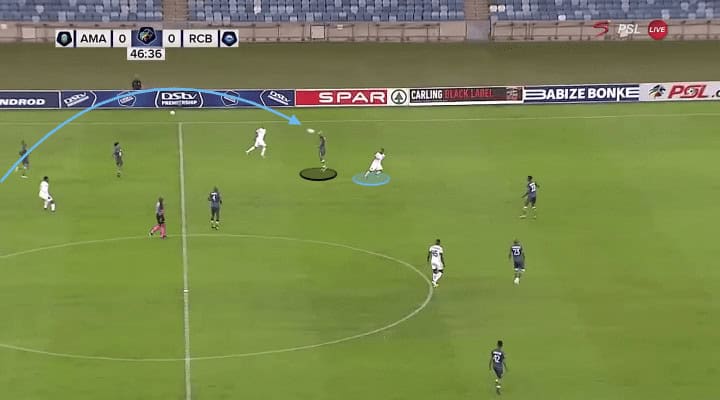
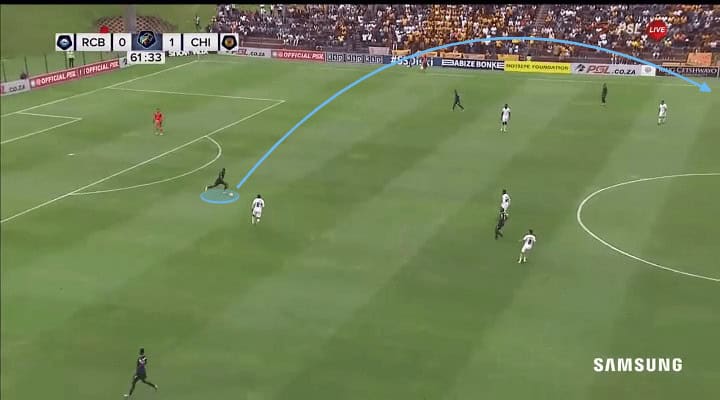
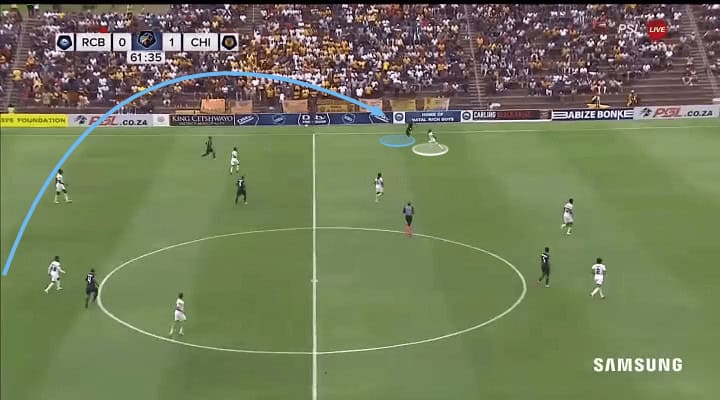
It also has an impact on the style of play, relying on physical strength and speed rather than creativity and skill. This can limit a team’s ability to create chances and score goals and could be a big reason why this team has scored so few goals this season.
Additionally, resorting to launching it long can lead to an increased reliance on individual players to create scoring opportunities rather than a team effort. This can result in a lack of cohesion and inconsistent performances which is certainly prevalent throughout this campaign.
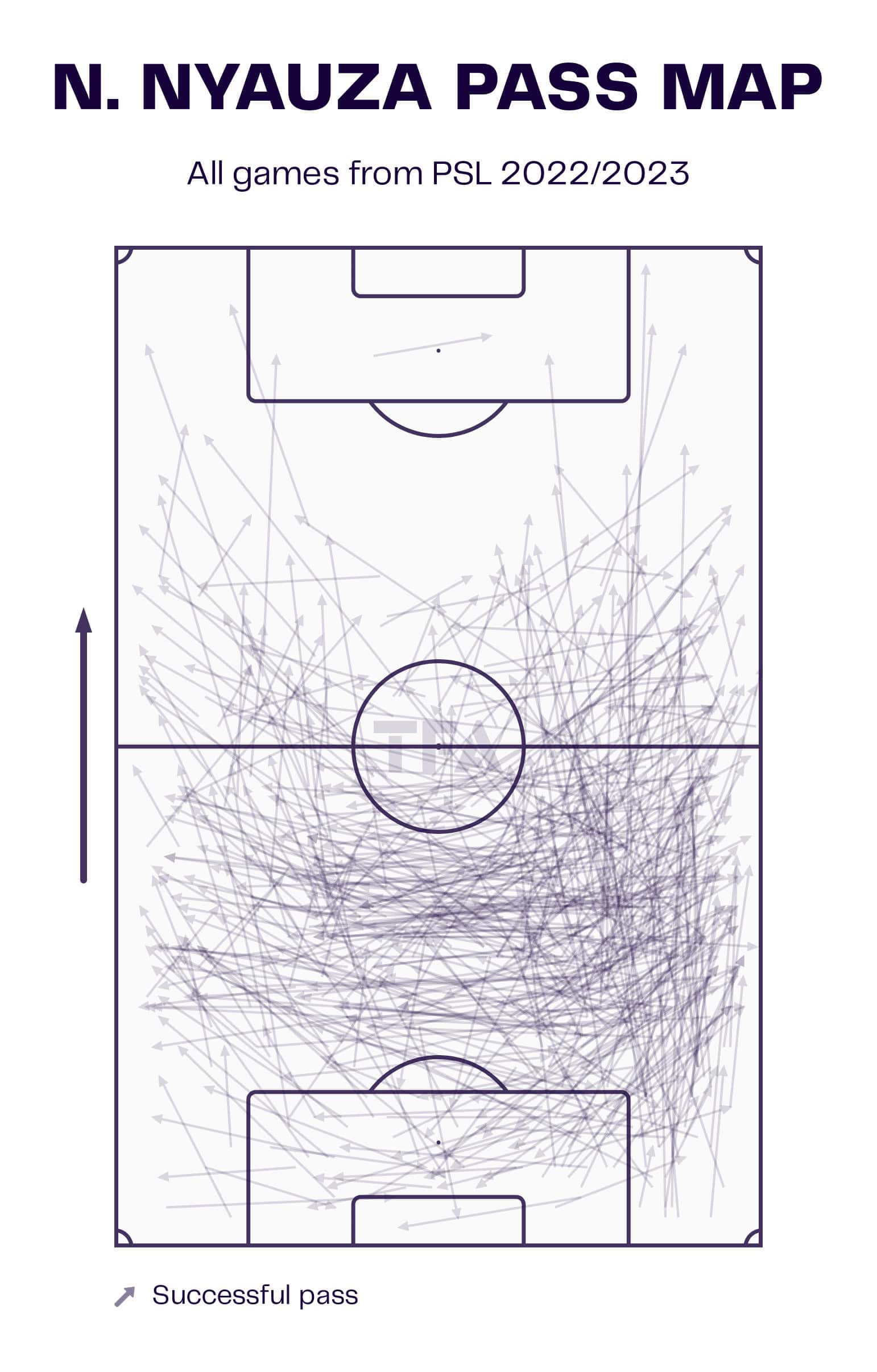
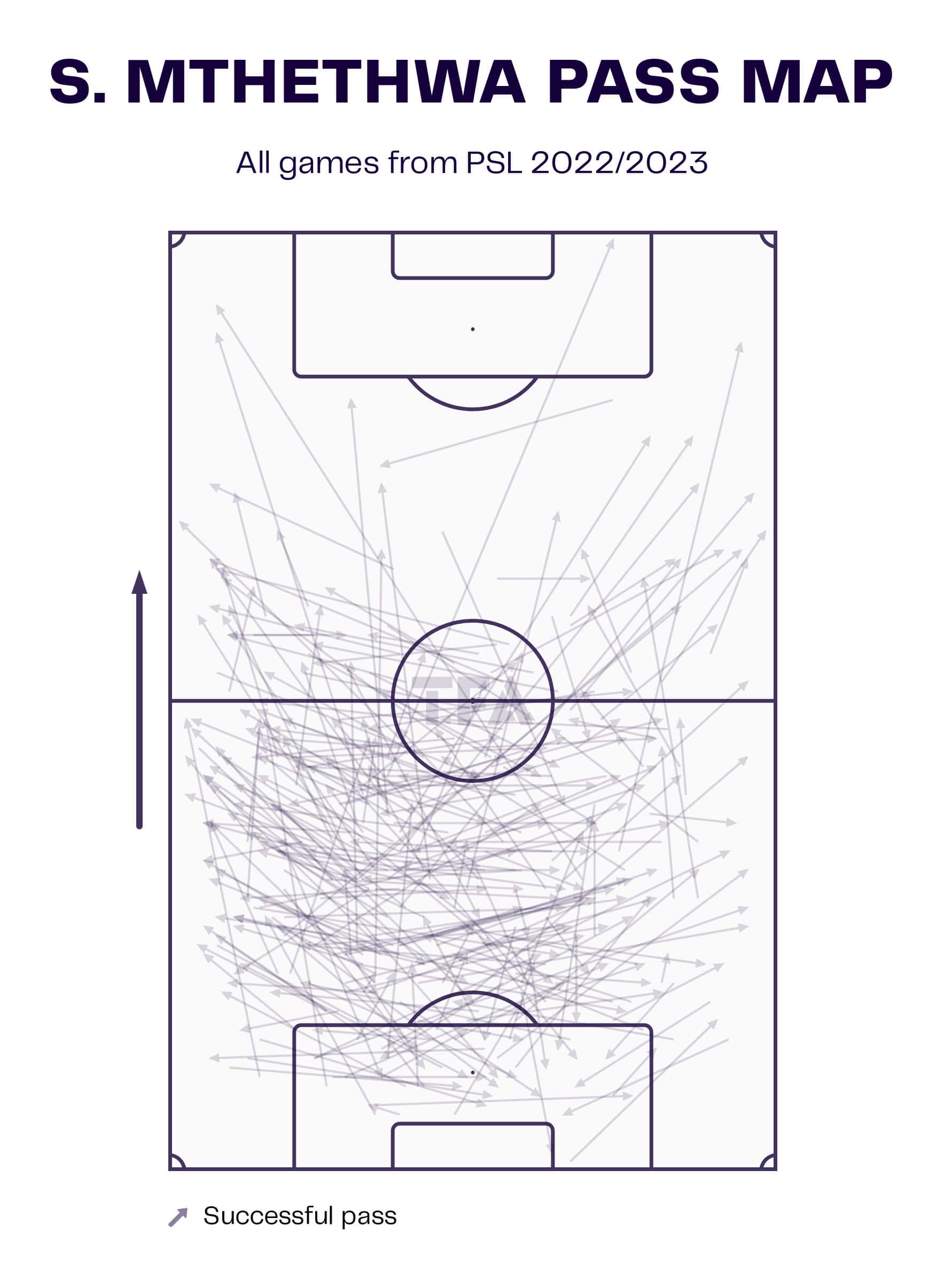

We have included the pass maps of central defenders Ntsikelel Nyauza and Sibusis Mthethwa and defensive midfielder Mpho Mathebula. These visuals show the passes between the defensive line and the long passes that are such a key part of Richards Bay’s tactics.
This in itself is not uncommon in football. Many teams adopt this approach and most English football fans will associate a long ball style with Sean Dyche at Everton. In fact, Liverpool, under Jurgen Klopp, have played the fifth most long passes so far this season in the English Premier League. The point here is that simply playing long passes doesn’t necessarily delineate a specific style of play.
There are good reasons why Manousakis and Dladla are asking their players, particularly the defenders, to utilise long passes. As mentioned previously, Richards Bay are often without the ball for substantial periods of time so once they have regained possession, the defenders may opt to play a long ball forward to relieve the pressure and get the ball out of their own half.
Also, a long pass from a defender is a great way to quickly transition from defence to attack. This is particularly effective if the opposition is caught out of position and allows the attacking team to quickly move forward with the ball.
The thought process behind Richards Bay using long passes has plenty of logic supporting it and it makes perfect sense for a newly-promoted side prioritising their defensive record. There is just a lack of execution that means they miss out on goal-scoring opportunities.
Defensive teamwork
It’s no secret how defensively sound this Richards Bay team is, having only conceded 16 goals all season. The data viz below shows the area of the pitch in which the team completes their defensive actions.
Averaging 40 interceptions per 90 and 14 clearances per 90, the Richards Bay defence is incredibly well-structured and organised. They excel at low block defending which enables the defensive line to keep the play in front of them, therefore, making it much easier to make the right decisions.
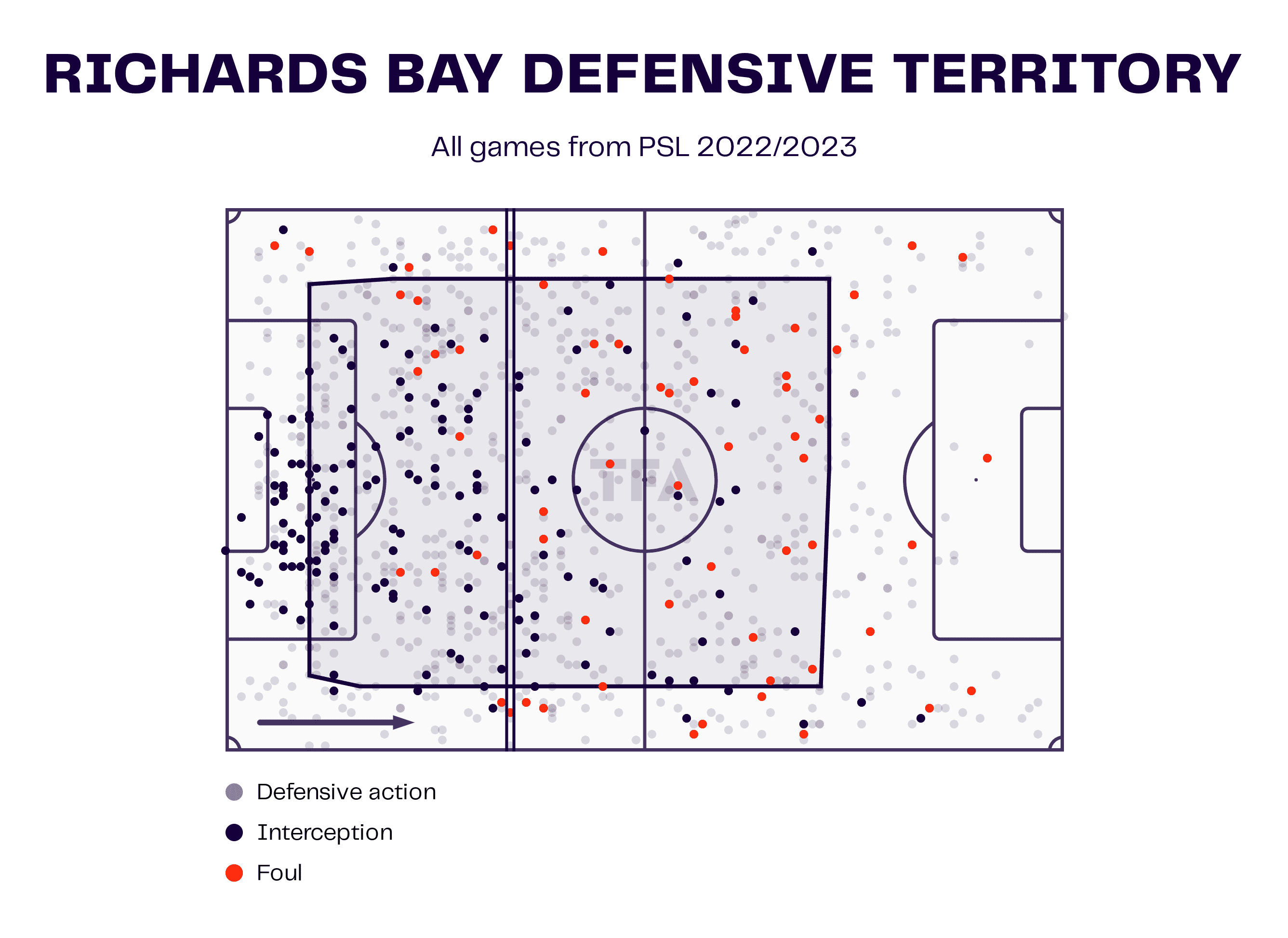
When defending, Richards Bay will often fall into a defensive line of five, so when they are using a 4-2-3-1 formation, one of the defensive midfielders will act as an extra centre-back (as shown below). This, of course, crowds the penalty area and makes it incredibly difficult for any of the opposition crosses or passes to reach their intended destination. This also provides the facility for Richards Bay to transition quickly from defence to attack which is one of their key principles under Vasili Manousakis and Pitso Dladla.
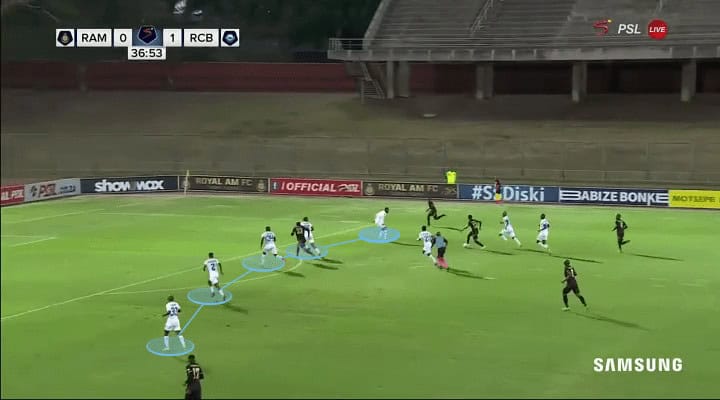
That ‘never say die’ attitude that is coursing through the veins of this team is especially apparent in the defensive phase. This is a team that is willing to put their bodies on the line, willing to block every shot and work twice as hard as the opposition. This is a team that has real cohesion and unity and that is a credit to the two co-coaches for creating that kind of environment.
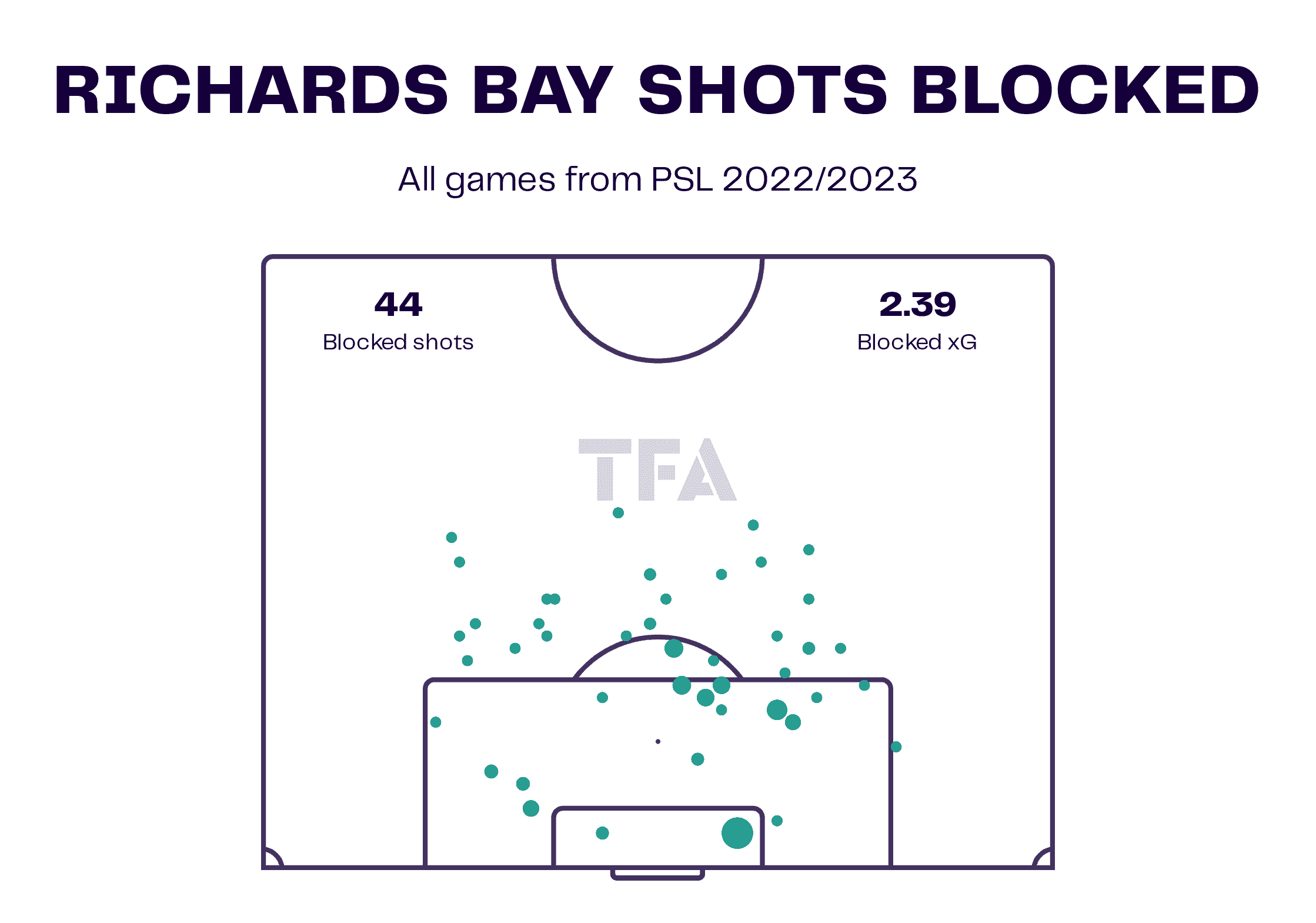
The data visual above just demonstrates how willing the Richards Bay players are to engage in their defensive duties. It shows that they are working hard as a unit and making important defensive contributions to the game. This can create a positive team dynamic and inspire players to work harder and play better. It must be incredibly frustrating to play against this Richards Bay team as they are such a defensively well-oiled machine which can have a huge effect on demoralising the opposition and giving Richards Bay a psychological advantage.
Conclusion
Overall, this tactical analysis has shown how Richards Bay have prioritised defensive stability to ensure they remain safely in the PSL this season.
As a team they are all on the same page, working as a unit towards the same collective goal. Their football is not always easy on the eye and we’re sure if you asked anyone at the club, they would like to be scoring a few more goals, but their style is proving to be effective so far this season.
Richards Bay are currently ten points from the relegation zone, so it’s highly unlikely they will be dragged into a battle. They are actually only three points away from third place which is qualification for the Confederation Cup.
It’s been almost a fairytale rise for Richards Bay, and it looks like it may continue.




Comments